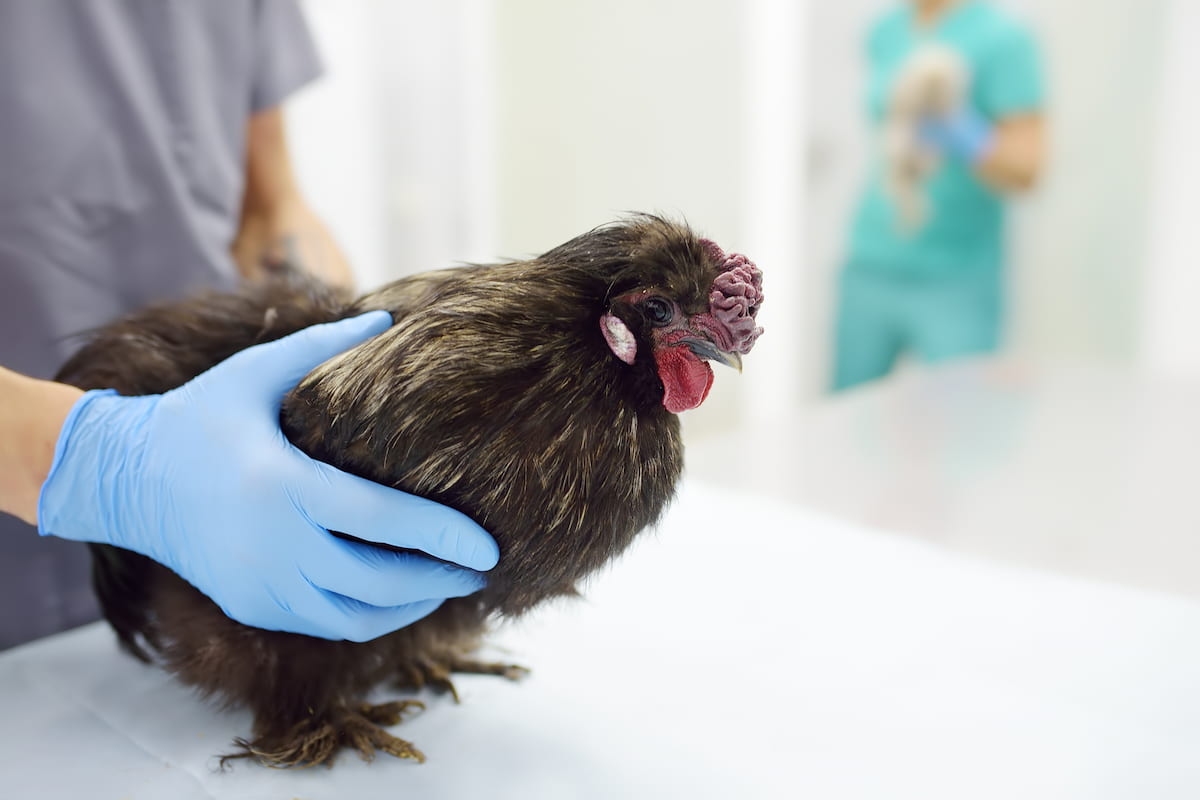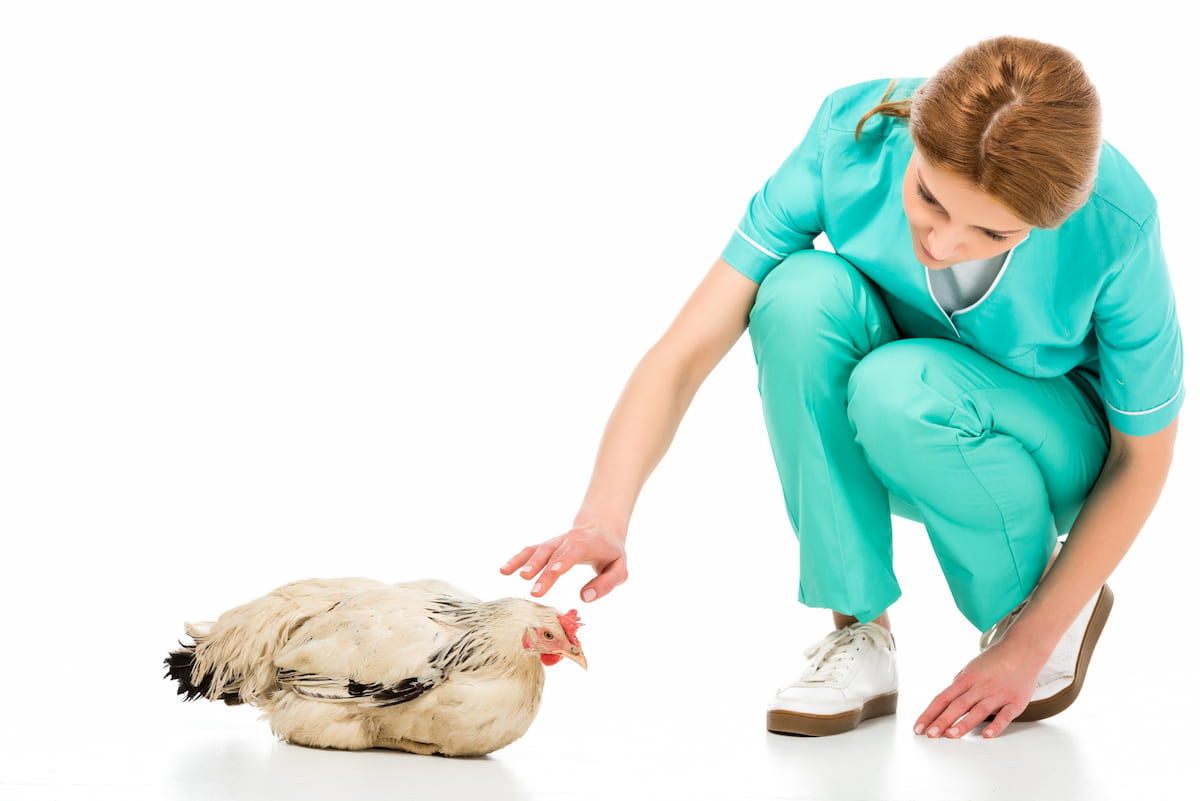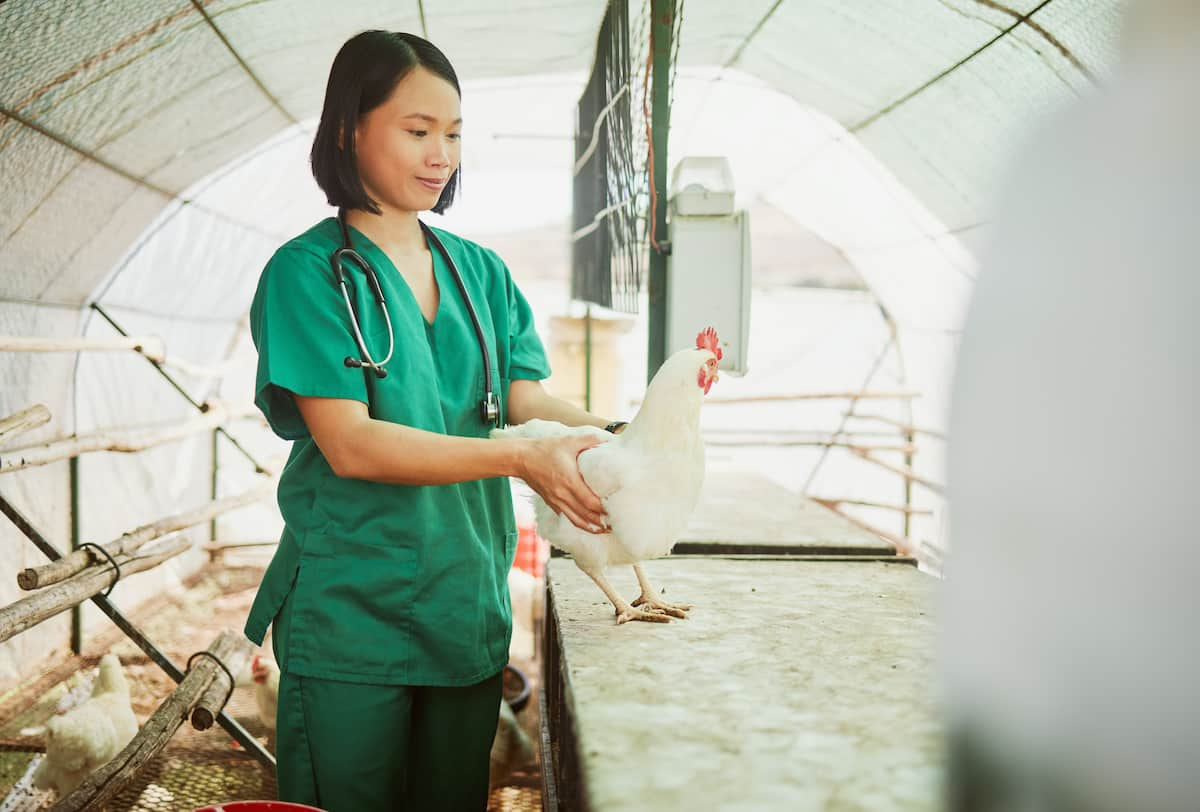Colibacillosis is a range of infectious diseases in birds caused by a type of bacteria known as avian pathogenic Escherichia coli (APEC). APEC is a specific strain of the commonly found bacteria E. coli, which can cause localized or systemic infections in birds.

Colibacillosis is a significant concern for poultry farmers, as it can result in various symptoms, including septicemia, a drop in production, and mortality. The disease can manifest in several forms, including colisepticaemia, egg peritonitis, yolk sac infection (also known as “mushy chick disease” and “omphalitis”), and coligranuloma (Hjarre’s disease).
Colibacillosis Management in Chicken
Causes of Colibacillosis Disease
The causes of colibacillosis are multifactorial, with various environmental and infectious factors playing a role in the development of the disease. Here are some of the primary causes of colibacillosis:
- Environmental contamination: Escherichia coli is a normal inhabitant of the digestive tract in birds, and its high numbers can be maintained in the poultry house environment through fecal contamination. The bacteria can live for a long time in the environment and can easily infect birds through direct or indirect contact.
- Predisposing factors: The presence of other infectious diseases such as mycoplasmosis, infectious bronchitis, Newcastle disease, hemorrhagic enteritis, and turkey bordetellosis can weaken the bird’s immune system and make them susceptible to colibacillosis. Poor air quality and environmental stresses can also predispose birds to E. coli infections.
- Hatchery contamination: Initial exposure to pathogenic E. coli may occur in the hatchery from infected or contaminated eggs. A hatching environment that is not sufficiently humid is often associated with a high incidence of yolk sac infection.
- Insect vectors: Beetles can transmit the bacteria, and birds that consume these beetles can become infected.
- Bacterial virulence: Some E. coli are more pathogenic than others, and the severity of the disease can depend on the virulence of the strain.
Symptoms of Colibacillosis Disease
The symptoms of colibacillosis in birds depend on the type and severity of the infection. Here are some common symptoms associated with colibacillosis:
- Respiratory symptoms: Affected birds may exhibit respiratory symptoms such as coughing, sneezing, and wheezing.
- Depression: Birds with colibacillosis often appear lethargic, inactive, and depressed.
- Loss of appetite: Infected birds may exhibit a reduced or complete loss of appetite.
- Diarrhea: Soiling the vent with pasty diarrhoeic feces is a common symptom of colibacillosis in birds.
- Omphalitis/Yolk sac infection: In young chicks, coliform omphalitis or yolk sac infection can cause mortality in the first week of life after hatching. Affected chicks exhibit depression, sleepiness, huddling around heat sources, and distended abdomen with swelling of the naval.
- Swollen Head Syndrome (SHS): This form of colibacillosis causes swelling of the head and face, which can lead to difficulty breathing and eating.
- Drop in egg production: In laying hens, colibacillosis can cause a drop in egg production and poor egg quality.
In case you missed it: Marek Disease Management in Chicken: Symptoms, Causes, Treatment, Diagnosis, and Prevention

Diagnosis of Colibacillosis in Chicken
The diagnosis of colibacillosis in chickens can be challenging, as the symptoms of the disease can be similar to those of other infections. Therefore, clinical signs, laboratory testing, and postmortem examinations are often used to diagnose the disease. Here are some common diagnostic methods used to identify colibacillosis in chickens:
- Clinical signs: Clinical signs such as respiratory symptoms, depression, loss of appetite, and diarrhea can suggest the presence of colibacillosis.
- Laboratory testing: Isolation of serotypes of E. coli associated with disease in poultry without other primary pathogens and their serological fingerprints can help diagnose colibacillosis.
- Postmortem examination: A postmortem examination of affected birds can help identify the presence of gross and histological lesions, such as airsacculitis, peritonitis, yolk sac infection, and inflammation of the oviduct.
- Culture and sensitivity testing: Culture and sensitivity testing can help identify the antibiotic sensitivity of the isolated E. coli strain, which can guide the choice of antibiotic therapy.
Treatment and Control of Colibacillosis Disease
- Treating colibacillosis in chickens involves controlling predisposing infections or environmental factors and the early use of antibiotics indicated by susceptibility tests.
- Tetracyclines, sulfas, ampicillin, and streptomycin have successfully controlled some E. coli infections in chickens.
- Early treatment is advised, with a follow-up considering antibiotic susceptibility testing using the specific isolate.
- It is important to note that as the organism becomes encapsulated or sequestered into caseous exudate, the antibiotic treatment may be less effective; thus, chronic stages of infection have a lower chance of being successfully treated.
In case you missed it: Infectious Coryza Management in Chicken: Disease Symptoms, Diagnosis, Treatment, and Prevention

Preventive Measures of Colibacillosis Disease in Chickens
- Proper disposal of infected excreta and litter: proper disposal of infected manure and litter is crucial to avoid contamination of natural water sources and reduce the spread of the disease.
- Avoiding overcrowding and stress: overcrowding and stress can weaken the birds’ immune systems and make them more susceptible to infections. Avoiding these conditions can help reduce the risk of outbreaks.
- Source of birds: procuring birds from sources that have been tested free of ND, IB, and Mycoplasma can help prevent the introduction of E. coli and other pathogens into the flock.
- Nutrition: A balanced diet with sufficient protein, selenium, and vitamin E can help support the bird’s immune system.
- Water treatment: chlorination of drinking water can inactivate the bacteria and reduce the risk of infection.
Conclusion
Colibacillosis is a highly contagious disease that can affect birds of all ages but is most commonly seen in young chicks. The disease is often transmitted through contaminated feed, water, bedding, or direct contact with infected birds or their feces. Preventing and controlling colibacillosis is essential for the health and well-being of poultry flocks.
This can be achieved through good management practices, including strict biosecurity measures, proper sanitation, and timely vaccination. Early detection and treatment are also critical in controlling the spread of the disease and minimizing its impact on the flock.
- Types of Fungicides Used in Agriculture
- Common Issues in the Fruit Development Stage of Pomegranate Farming
- Fruit Development Issues in Papaya: Easy Solutions and Treatment
- Soil-Borne Diseases and How to Protect Your Plants
- Practices to Prevent Disease Spread in the Garden
- From Wilted to Thriving: How to Treat Root Rot Naturally in Houseplants
- Natural Remedies to Cure Brown Spots on Fig Tree Leaves
- Natural Solutions for Poinsettia Problems: 100% Effective Remedies
- How to Control Calla Lily Problems: Natural Remedies for Leaf and Flower Problems